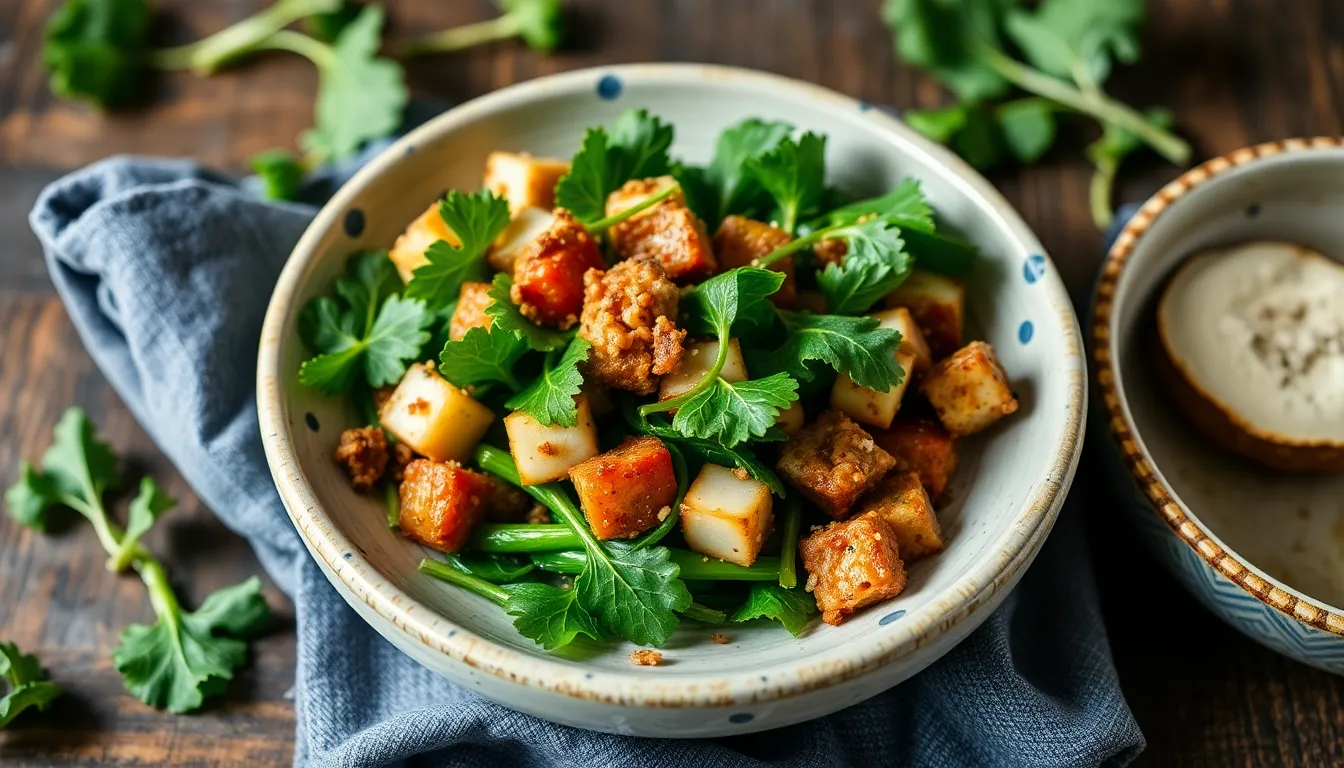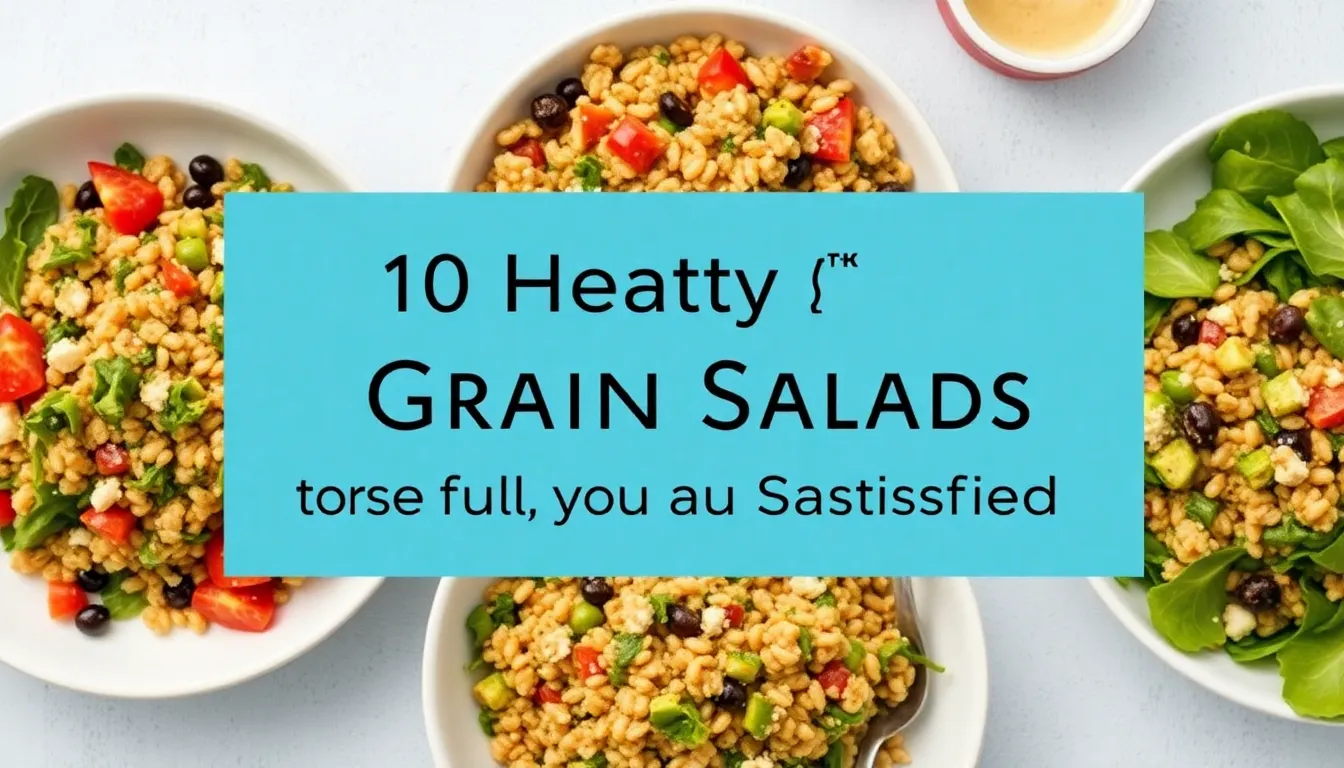How to Cook with Seasonal Greens: Recipes for Every Meal
Introduction
Cooking with seasonal greens is not only a delightful way to enhance your meals, but it also brings a wave of benefits to both your health and the environment. Seasonal greens, harvested at the right time of year, are packed with nutrients and provide a burst of flavor that outshines their out-of-season counterparts. They are often fresher, tastier, and more affordable when sourced locally. In this article, we will explore the benefits of seasonal greens, how to select and store them, various cooking techniques, and provide delicious recipes for breakfast, lunch, dinner, and snacks that will inspire you to incorporate these vibrant ingredients into your everyday meals.
Section 1: Understanding Seasonal Greens
Seasonal greens refer to leafy vegetables that are harvested at their peak during specific times of the year. These greens are typically more abundant and flavorful, making them a staple in many culinary traditions.
Incorporating seasonal greens into your diet offers numerous benefits:
- Nutritional value: Seasonal greens are rich in vitamins, minerals, and antioxidants.
- Flavor enhancement: Fresh, in-season greens provide a deeper and more complex flavor profile.
- Environmental impact: Consuming seasonal produce reduces the carbon footprint associated with shipping foods long distances.
HTML Table 1: Seasonal Greens by Month
| Month | Greens Available | Nutritional Benefits |
|---|---|---|
| January | Collard Greens, Kale, Spinach | High in vitamins A, C, K, and calcium. |
| February | Kale, Mustard Greens, Swiss Chard | Rich in antioxidants and iron. |
| March | Arugula, Spinach, Watercress | High in vitamins K and C, low in calories. |
| April | Spinach, Lettuce, Pea Shoots | Good source of folate and fiber. |
| May | Romaine, Arugula, Beet Greens | High in vitamins A and C, iron. |
| June | Swiss Chard, Kale, Mustard Greens | Rich in vitamins A, C, and K. |
| July | Spinach, Arugula, Basil | High in antioxidants, good for skin health. |
| August | Kale, Romaine, Purslane | High in omega-3 fatty acids and vitamins. |
| September | Collard Greens, Mustard Greens | Rich in fiber and beneficial for digestion. |
| October | Spinach, Broccoli Rabe, Kale | High in vitamins A and K, good for bone health. |
| November | Brussels Sprouts, Swiss Chard | Rich in vitamins C and K. |
| December | Kale, Collard Greens, Mustards | Good source of calcium and vitamin C. |
Section 2: Tips for Selecting and Storing Seasonal Greens
Choosing the freshest greens is crucial for maximizing flavor and nutrients. Here are some tips:
- Look for vibrant colors: Select greens that are bright and vivid in color, as this indicates freshness.
- Avoid wilting: Ensure that the leaves are crisp and free of brown spots.
- Smell the greens: Fresh greens should have a pleasant, earthy aroma.
Once you’ve selected your greens, proper washing and preparation are key:
- Wash greens thoroughly in cold water to remove dirt and pesticides.
- Use a salad spinner to remove excess moisture before storage.
Storage tips to keep your greens fresh:
- Wrap greens in a damp paper towel and store them in a plastic bag in the refrigerator.
- For heartier greens like kale or collards, place them in a breathable container, avoiding excessive moisture.
Section 3: Cooking Techniques for Seasonal Greens
Cooking methods greatly influence the flavor and texture of greens. Here’s an overview of various techniques:
- Sautéing: Quick and enhances flavor; ideal for soft greens.
- Steaming: Retains most nutrients; suitable for delicate greens.
- Roasting: Adds depth and caramelizes the natural sugars; perfect for tougher greens.
- Blanching: Briefly cooks and then cools; great for prepping greens for salads or freezing.
Recommended techniques for specific greens include:
- Spinach: Sauté or steam.
- Kale: Sauté or roast.
- Collard Greens: Simmer or braise.
HTML Table 2: Cooking Techniques and Time
| Green | Cooking Method | Time Required |
|---|---|---|
| Spinach | Sauté | 3-5 minutes |
| Kale | Roast | 15-20 minutes |
| Collard Greens | Simmer | 30-45 minutes |
| Swiss Chard | Sauté | 5-7 minutes |
| Arugula | Raw (Salad) | 0 minutes |
| Beet Greens | Blanch | 2-3 minutes |
Section 4: Breakfast Recipes Featuring Seasonal Greens
Recipe 1: Spinach and Feta Omelette
Ingredients:
- 2 large eggs
- 1 cup fresh spinach, chopped
- 1/4 cup feta cheese, crumbled
- Salt and pepper to taste
- 1 tablespoon olive oil
Instructions:
- In a bowl, whisk the eggs with salt and pepper.
- Heat olive oil in a non-stick skillet over medium heat.
- Add the spinach and cook until wilted.
- Pour the eggs into the skillet and cook until edges set.
- Sprinkle feta cheese on one half of the omelette, fold, and serve.
Recipe 2: Kale Smoothie Bowl
Ingredients:
- 1 cup kale leaves, stems removed
- 1 banana
- 1/2 cup almond milk
- 1 tablespoon chia seeds
- Fresh fruits and nuts for topping
Instructions:
- Blend kale, banana, almond milk, and chia seeds until smooth.
- Pour into a bowl and top with fresh fruits and nuts.
Tips for incorporating greens into breakfast:
- Add greens to smoothies for an extra nutrient boost.
- Mix greens into scrambled eggs or omelettes.
- Include greens in breakfast burritos or wraps.
Section 5: Lunch Recipes Featuring Seasonal Greens
Recipe 3: Arugula and Quinoa Salad
Ingredients:
- 1 cup cooked quinoa
- 2 cups arugula
- 1/2 cup cherry tomatoes, halved
- 1/4 cup feta cheese
- 2 tablespoons olive oil
- 1 tablespoon lemon juice
- Salt and pepper to taste
Instructions:
- In a bowl, combine quinoa, arugula, tomatoes, and feta.
- Whisk together olive oil, lemon juice, salt, and pepper.
- Drizzle dressing over the salad and toss gently.
Recipe 4: Swiss Chard Wraps
Ingredients:
- 4 large Swiss chard leaves
- 1 cup cooked brown rice
- 1/2 cup black beans, rinsed
- 1/4 cup diced bell pepper
- 1 avocado, sliced
Instructions:
- Blanch Swiss chard leaves in boiling water for 30 seconds, then cool.
- On each leaf, layer rice, beans, bell pepper, and avocado.
- Wrap tightly and secure with a toothpick if needed.
Suggestions for meal prep with greens:
- Prepare salads in advance and store them in jars for quick lunches.
- Cook large batches of grains and mix with greens for easy meal options.
Section 6: Dinner Recipes Featuring Seasonal Greens
Recipe 5: Roasted Brussels Sprouts with Garlic
Ingredients:
- 1 pound Brussels sprouts, halved
- 4 cloves garlic, minced
- 3 tablespoons olive oil
- Salt and pepper to taste
Instructions:
- Preheat the oven to 400°F (200°C).
- Toss Brussels sprouts with garlic, olive oil, salt, and pepper.
- Spread on a baking sheet and roast for 25-30 minutes until golden brown.
Recipe 6: Collard Greens and Sausage Stew
Ingredients:
- 1 pound collard greens, chopped
- 1/2 pound smoked sausage, sliced
- 1 onion, diced
- 2 cups chicken broth
- 1 teaspoon paprika
- Salt and pepper to taste
Instructions:
- In a large pot, sauté onion until translucent.
- Add sausage and cook until browned.
- Stir in collard greens, chicken broth, paprika, salt, and pepper.
- Simmer for 30 minutes, until greens are tender.
Pairing suggestions for side dishes:
- Serve roasted Brussels sprouts with quinoa or brown rice.
- Pair the collard greens stew with cornbread or a crusty baguette.
Section 7: Snacks and Appetizers with Seasonal Greens
Recipe 7: Stuffed Mushrooms with Spinach
Ingredients:
- 12 large mushrooms, stems removed
- 1 cup spinach, chopped
- 1/2 cup cream cheese
- 1/4 cup grated Parmesan cheese
- 1 teaspoon garlic powder
Instructions:
- Preheat oven to 375°F (190°C).
- Mix spinach, cream cheese, Parmesan, and garlic powder in a bowl.
- Stuff mixture into each mushroom cap.
- Bake for 20-25 minutes until mushrooms are tender.
Recipe 8: Green Smoothie Bites
Ingredients:
- 1 cup spinach
- 2 bananas
- 1/2 cup almond milk
- 1/4 cup oats
- Honey to taste
Instructions:
- Blend spinach, bananas, almond milk, oats, and honey until smooth.
- Pour mixture into silicone molds and freeze for 2-3 hours.
- Pop out and enjoy as a nutritious snack.
Creative ways to incorporate greens into snacks:
- Add greens to dips like hummus or guacamole for extra nutrition.
- Use spinach in smoothies or energy balls for a nutrient boost.
Section 8: Conclusion
https://www.youtube.com/watch?v=1LJ7TA8pQZ8




